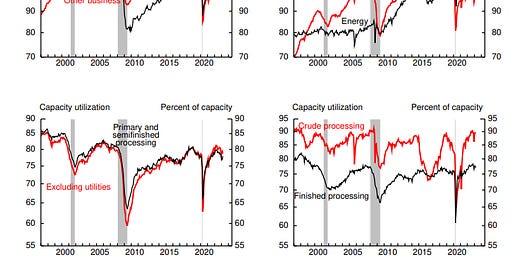Consider the Everything Bubble
5 neat datas on freight, bailouts, small banks, CRE #winning, and recession-proof mattresses. Finally, what if everything we knew about the last 15 years is just . . . wrong?
5 Great Datas to unlock the secrets of the universe:
Freight fear, when shipping is a leading indicator
You call it a bail out, but I call it smashing the debt ceiling
Small banks, rawr
CRE is winning (in just one sector, but definitely losing badly everywhere else)!
“Sir, this is a recession-proof mattress” and we’re all discount shoppers now
1 big think to make you sleep well at night (after you’ve concluded that Random Walk is obviously wrong):
Consider the Everything Bubble, or how we have both too much and too little real estate at the same time, and revisiting priors is hard.
Scatterplots
Freight fear
Tender-rejections, i.e. when a shipper says “no thanks, I’m too busy to ship your stuff” are reaching pandemic lows:
That’s a pretty good indication that economic activity is slowing down. Also, another reminder that every shortage becomes a surplus:
Keep reading with a 7-day free trial
Subscribe to Random Walk to keep reading this post and get 7 days of free access to the full post archives.





